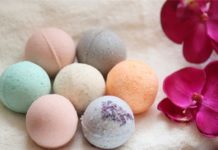Aesthetic taping is also called plaster lifting: "tape" in translation from English means "tape", the second meaning of the word is "to glue". Initially, taping was developed as a method of physical therapy, in the 70s of the last century it was first used for the rehabilitation of professional athletes after injuries. It was introduced into cosmetology relatively recently - in the mid-90s. Over the past 20-plus years, the technique of this procedure for getting rid of wrinkles has undergone minimal changes. The innovations concerned mainly the materials with which it is carried out, that is, the tapes.
Content
How to do it right
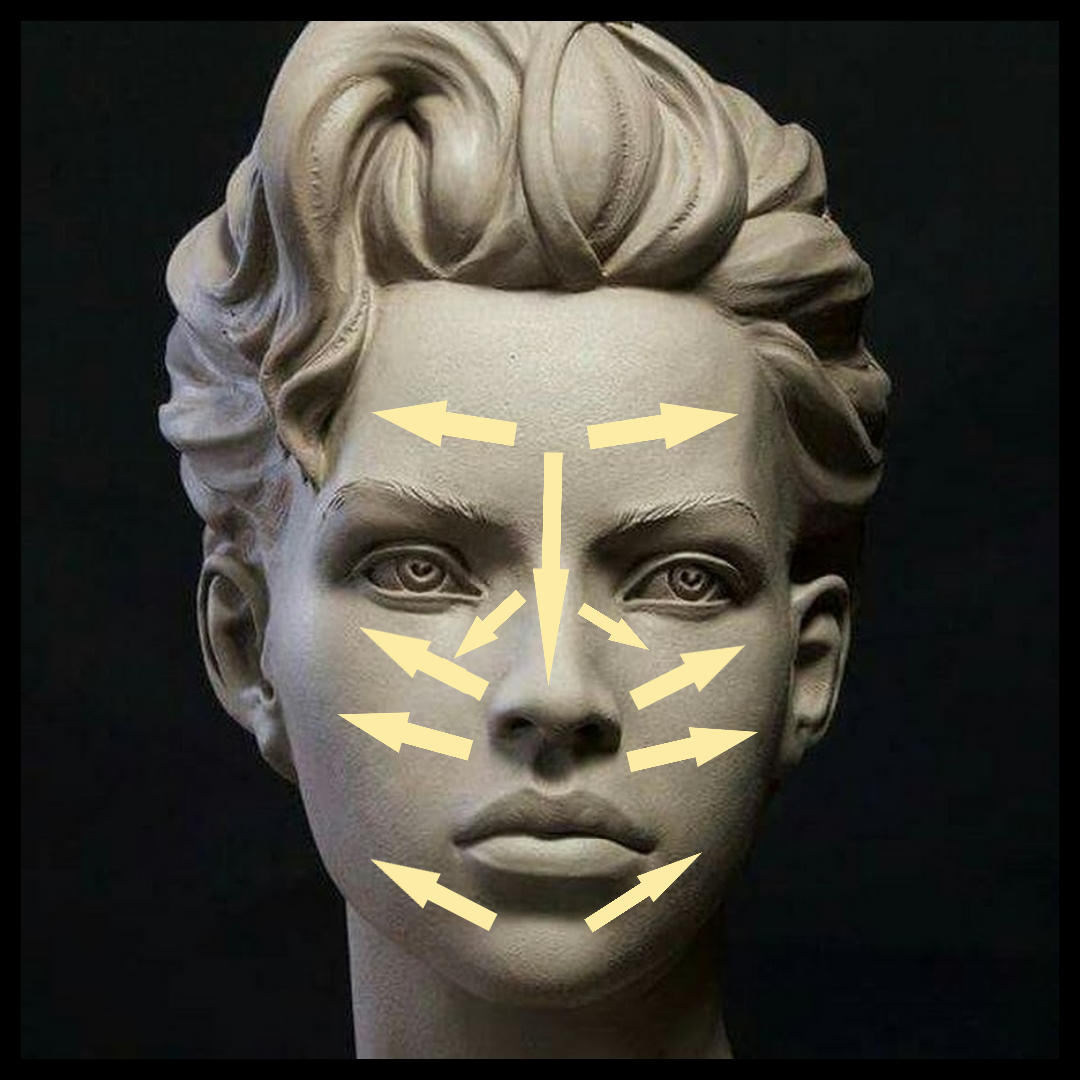
The essence of the technique is that a cotton or silk tape is glued to the skin, taking on part of the load from the tension of the upper layer of the skin and fixing the facial muscles. Thus, their uncontrolled contraction is blocked (it will not be possible to involuntarily wrinkle, squint, etc.), which prevents the formation of mimic wrinkles that appear just due to such uncontrolled movements. According to the statements of cosmetologists promoting this cosmetic procedure, the microcirculation of the lymph increases in the area fixed with the tape. The increasing blood flow nourishes the skin with oxygen and nutrients, bringing them faster to the most remote corners. This is due to the fact that a properly glued patch provides additional space for lymph circulation by lifting the skin.
For the result to be noticeable and not give the opposite effect, you need to be guided by the following rules:
- Before the procedure, the face is thoroughly cleansed. The application of oily cosmetics is excluded - it prevents the adhesive layer of the tape from adhering to the skin and the correct fixation of the skin tissue.
- It is permissible to carry out a light massage before gluing the tapes - they will better stick to the heated skin. For the same purpose, it can be slightly "warmed" between the palms before gluing.
- The tape is applied along the massage lines so that no creases or folds are formed on the skin. Do not stick on the skin around the eyes.
- Depending on the depth of the wrinkles, application time can take from 40 minutes to several hours. In case of deep wrinkles and "floating" facial contours, it is recommended to leave the tapes overnight. At the same time, teips do not have a division into day and night types, as some buyers believe. Different colors of teips do not have any informative function, they are designed to cheer up those who use them and those who look at them, nothing more.
- Before removing the tape, do not moisten the tape with water or alcohol, so that the glue does not peel off and remain on the skin. Better to use a special remover spray or cosmetic oil. After soaking the tape with it, you need to wait 2-3 minutes.
- The plaster is removed in the same way as it was applied - along the massage lines, while first the upper part of the edge of the tape is carefully separated, and it rolls into a roll in the direction from the center of the face to the edges. Movements should be smooth, do not pull or pull the tape too much.
- After removing the tapes, you can apply a moisturizing cream with hyaluronic acid or a light gel with collagen in the composition.After taping, any of these products moisturizes and nourishes the skin well, instantly absorbing into the heated skin. Slight reddening of the face after the procedure is normal; no need to be afraid of this.
A gift for the most practical young ladies who do not like to overpay for what they can do with their own hands: plaster lifting can be done at home on your own. To do this, you will need a diagrammatic drawing with indicated directions of massage lines, tape and a little patience to “fill your hand”. If you take your time and strictly follow the recommendations presented above, you can master the technique of aesthetic taping.
Scheme for 30-40 years: focus on the cheeks, cheekbones and nasolabial folds.
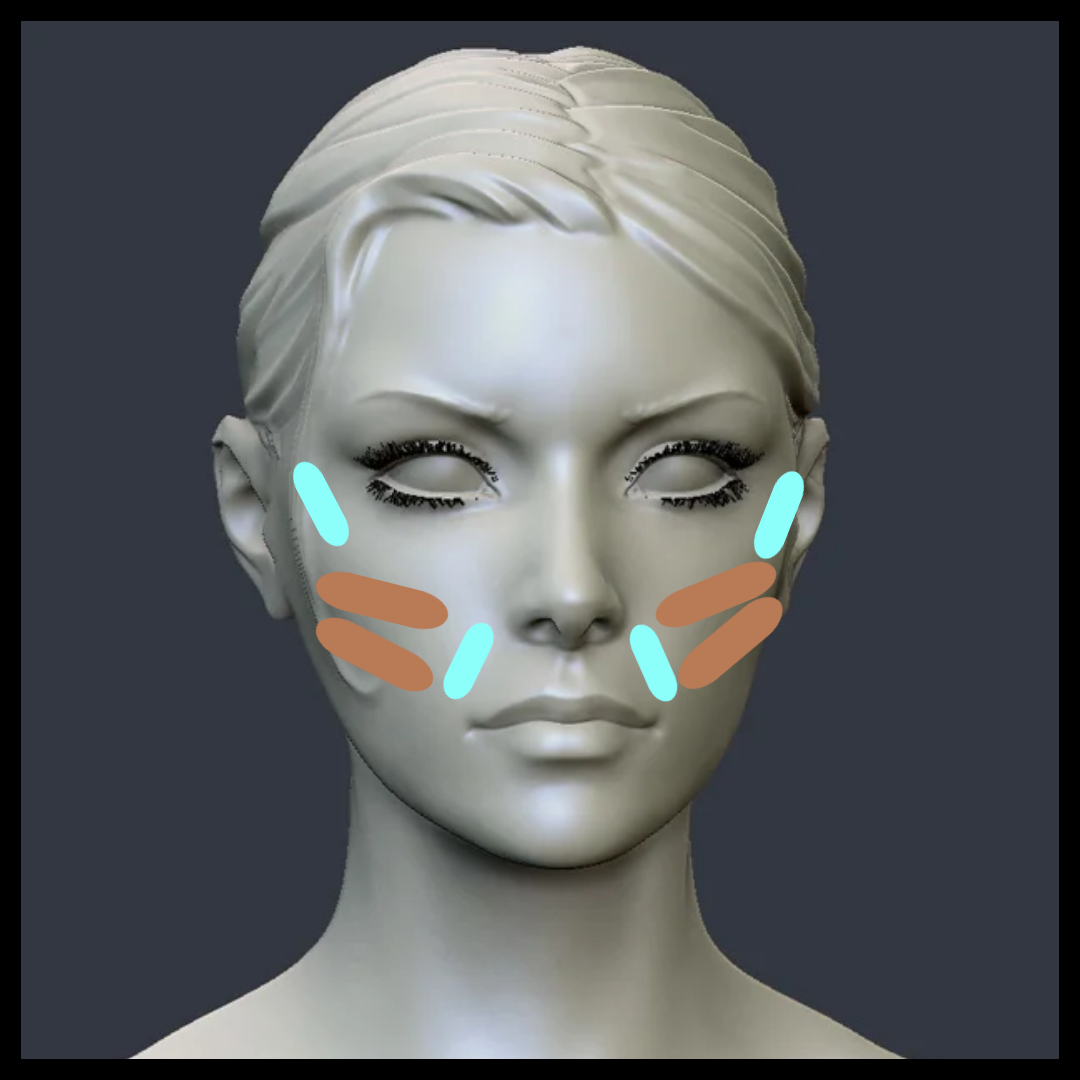
Scheme for 40-50 years: to the above is added "T" -zone (forehead and space between and above the eyebrows), and the chin area.
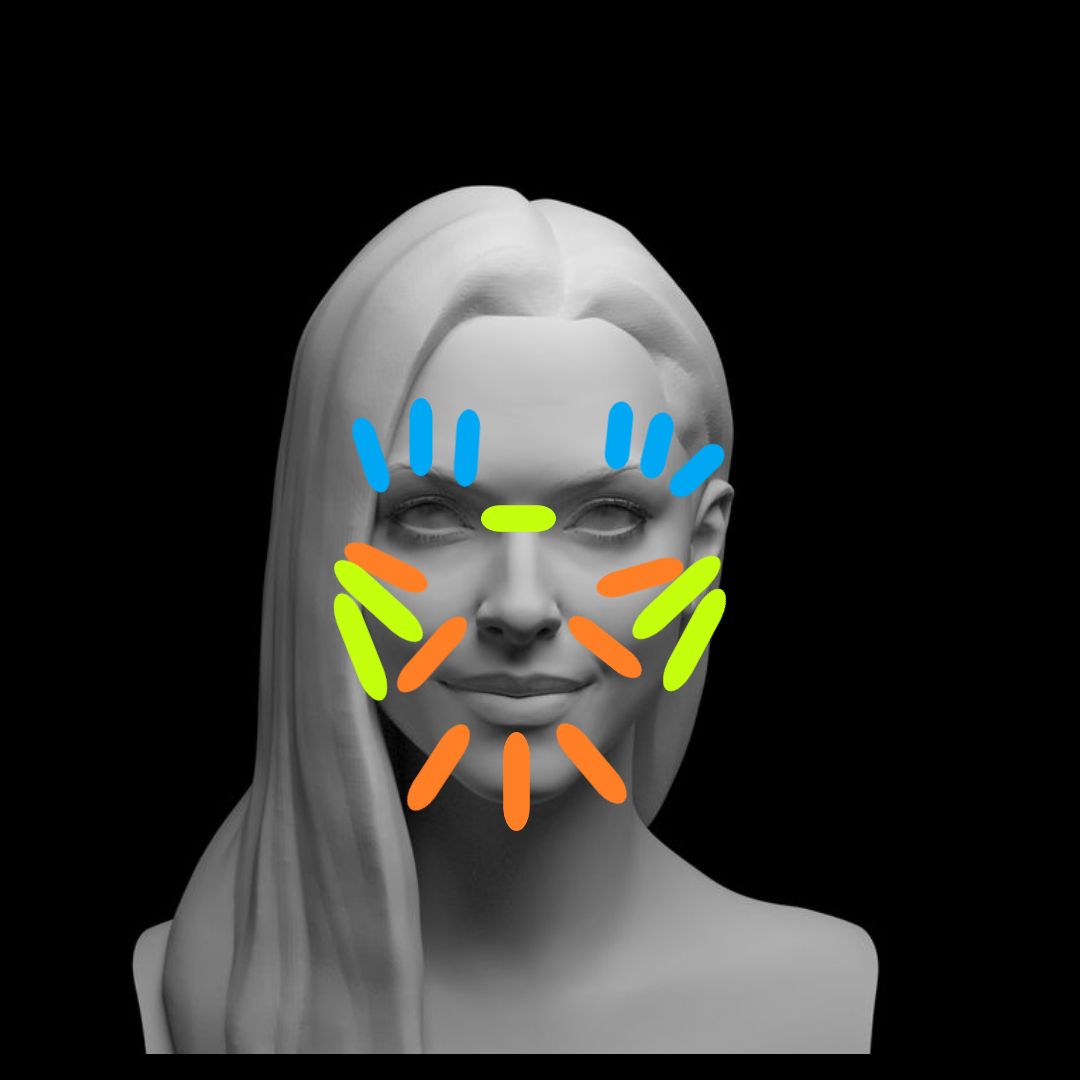
Scheme from 50 years old: all of the above + face oval and nose

In addition, you need to know what teips are. If you plan to carry out the procedure yourself, a natural question will arise: how to choose the right material. Therefore, below, the criteria for choosing a kinesiological tape for aesthetic face taping are discussed in detail.
Purpose
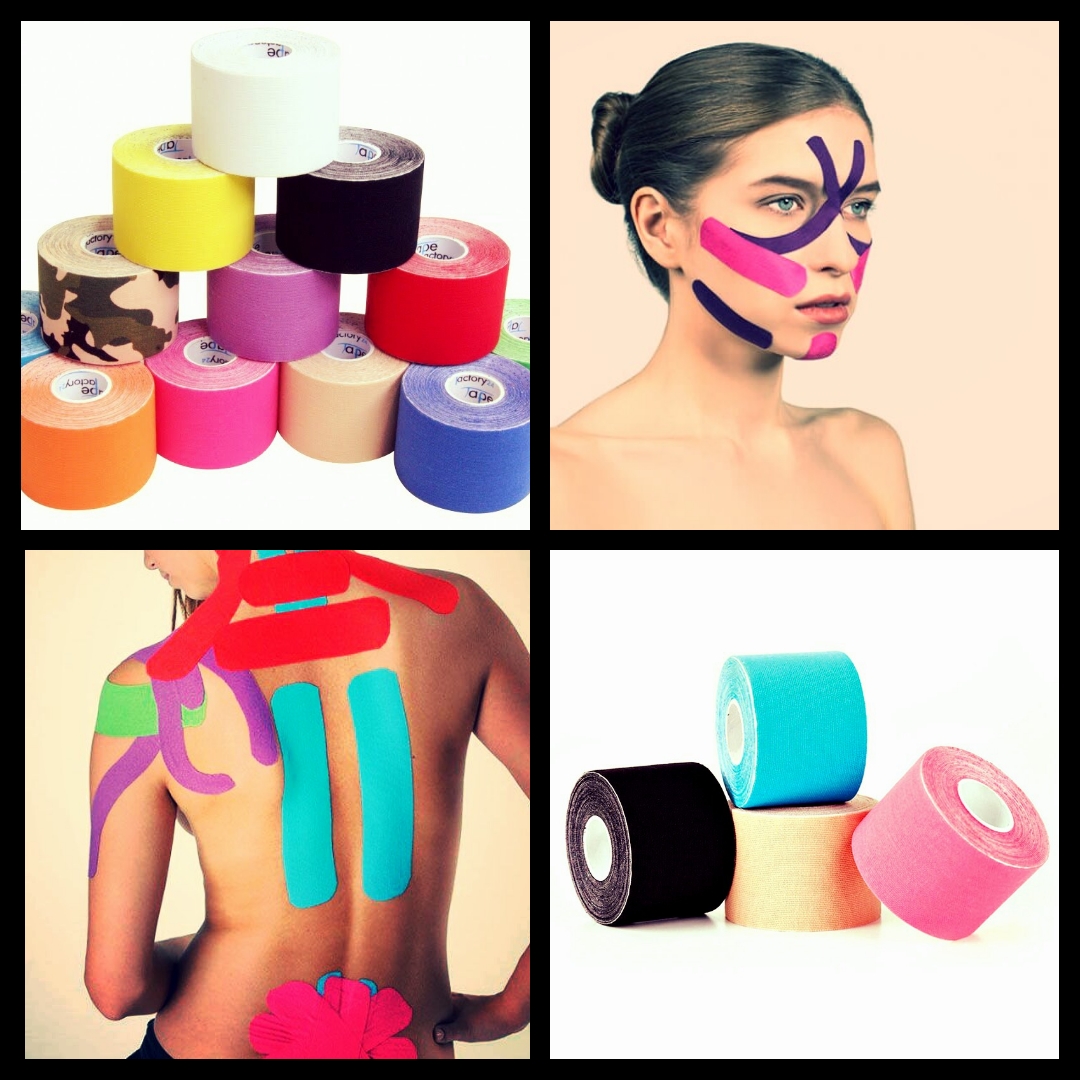
As a rule, the type of tape is indicated on the packaging: kinesio tape, cross-tape, active-tape, or cosmetology.
Kinesiological (from the Greek "kinesio" - in motion) has plasticity, can be used as a cosmetic patch against wrinkles, and as a sports option for sprains, hematomas and other injuries. Cross and asset are used to prevent injuries, they are glued to a weakened or incompletely recovered part of the body. As a rule, it is produced in spools with different tape widths, which allows you to measure strips of any length. The following types of cosmetic tapes are used for the face:
- Lymphatic drainage - from 0.5 to 1.5 cm wide - universal for any part of the face, used to activate lymph flow (for example, with hematomas);
- Modeling - from 1 to 2.5 cm in width, for the nasolabial and "T" -zone.
With low efficiency of cosmetic types, cosmetologists can resort to the use of cross-tapes - adhesive structures in the form of a lattice. Their main feature is the inelastic material from which they are made. This provides a more rigid fixation of the facial muscles and the upper layer of the skin to enhance the circulation of lymph flow.
Cosmetologist's advice: do not replace the cosmetic patch for the face with a cross-tape yourself. The expediency of such a replacement can only be judged by a cosmetologist with a medical education, who correctly evaluates the condition of the skin and the presence of a result from the procedures already performed.
The fact is that it is impossible to independently determine the effectiveness of taping after the first 3-4 sessions - only a beautician can notice changes at an early stage. The visual effect appears after 8-10 procedures.
Manufacturer

Those who plan to carry out the procedure on their own and have doubts about which teip is better to buy, should pay attention to the products of South Korean companies. Koreans are the best manufacturers of cosmetic products for face and body care with the best value for money.
Cosmetologist's recommendations: when purchasing tapes from American, French and German companies and deciding which one is better to buy, you need to carefully study the description: the address of the production is indicated there. This is the first thing to pay attention to.
The fact is that most of the products of European cosmetics companies are made in China. It is economically more expedient to maintain production facilities in this particular country because of the cheap rent of space and labor.
A natural question arises: where to buy high-quality Korean material? In Russian stores and pharmacies, Korean cosmetic products are very scarce, except for specialized outlets, where the goods come directly from the DPRK.You can buy tapes at online stores that sell Korean cosmetics for face and body.
Further - a rating of high-quality face tapes from Korean manufacturers that have received the best reviews from buyers and beauticians.
Ares beauty tape

A universal option for getting rid of wrinkles and for accelerating rehabilitation after injuries, and not only sports ones. Material: 97% Cotton, 3% Spandex. Thanks to its composition, it reliably fixes the skin in the selected area, preventing the involuntary movement of facial muscles.
Advantages:
- Hypoallergenic adhesive composition - the product is used in pediatrics and cosmetology;
- Breathable texture.
Disadvantages:
- Width - 5 cm, it is inconvenient to use for small areas on the face, for example, at the temples for the prevention of crow's feet.
BBTape
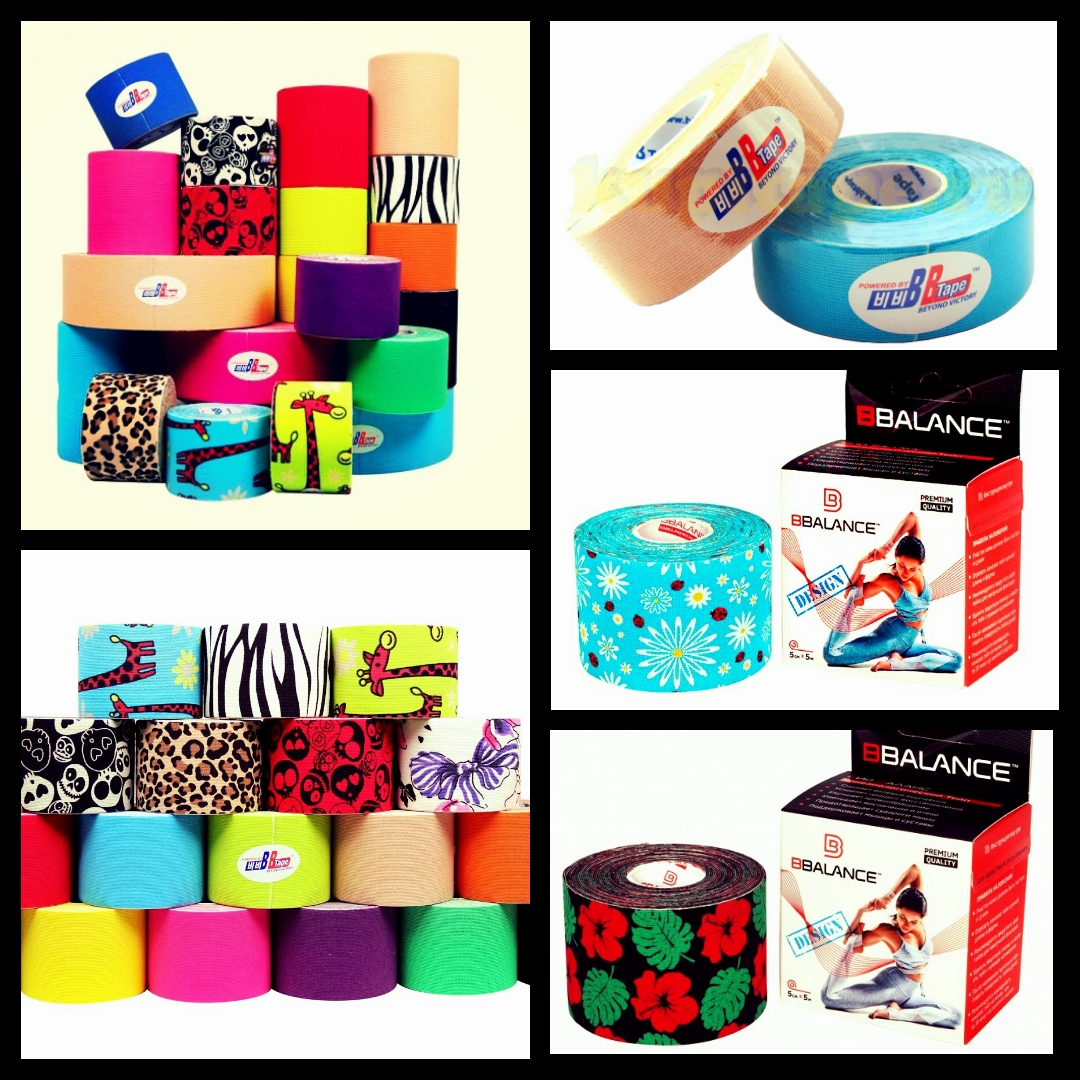
Developed by the Korean Medical Association for Balancing Taping. Their assortment includes the most budgetary cosmetic tapes made of artificial silk, natural cotton and nylon - to choose from, depending on the purpose. Marketing "trick": teips are produced in 18 colors for every taste and for every wardrobe. After all, people are no longer ashamed of teips, displaying them, as was the case at the 2012 Olympics, when many athletes were full of colorful stripes glued to different parts of the body. Three types of adhesive: strong, soft and hypoallergenic. There is an additional line with children's colors.
Advantages:
- Width from 2.5 to 5 cm;
- A 5 m coil can be purchased at a price of 320 rubles;
- There are waterproof types of tapes;
- Available waterproof types of teips.
Disadvantages:
- Not found.
Nasara
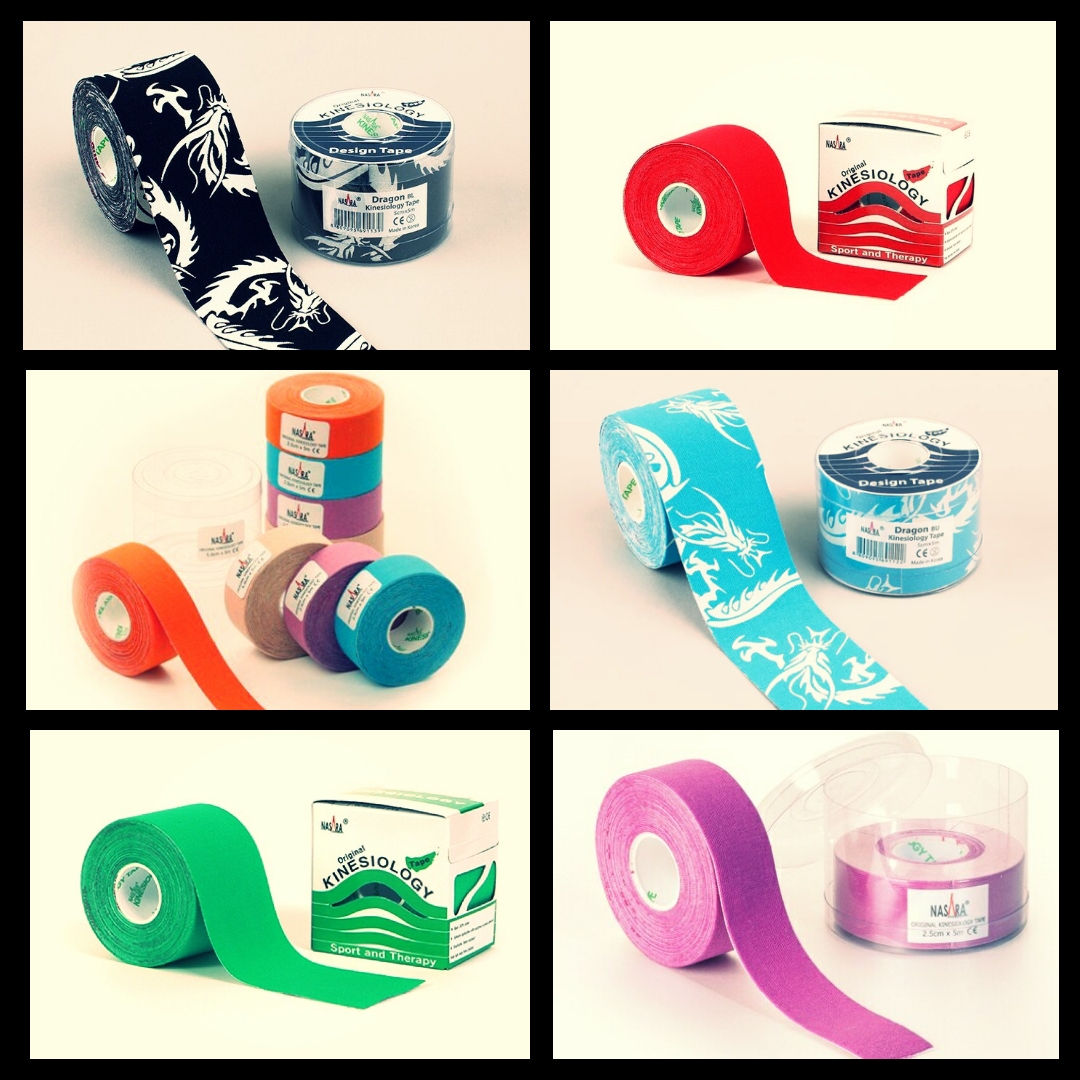
The company has been producing kinesio tapes since 1996. The line includes 8 colors and two types of material: cotton and rayon. Thanks to constantly improving production technologies, the material "breathes" no worse than cotton. The first silk tapes were not so safe for skin, especially for sensitive skin. After their application, 30% of patients experienced irritation caused by the greenhouse effect.
Advantages:
- Waterproofness - 100%;
- Hypoallergenic adhesive composition.
Disadvantages:
- Average price - from 650 rubles. for 5 m.
Cosmetologist's recommendations: when choosing between Korean and Chinese products, it is better to give preference to the former.
According to buyers, Chinese teips are inferior to their Korean counterparts in quality. Characteristics such as air permeability, plasticity and hypoallergenicity of Korean teips are an order of magnitude higher than that of Chinese. Strict state control over the production of cosmetics and materials guarantees the quality of products and encourages manufacturers to constantly improve technologies. Therefore, the statement about the high quality of Korean products is by no means unfounded, but backed up by facts. On the forums and resources of beauty bloggers, you can find detailed reviews on this topic, including comparative ones.
In addition to recommendations, aesthetic taping also has contraindications:
- The procedure is used with caution on oily skin, since the tape closes the pores, interfering with the production of sebum and provoking the appearance of abscesses. The same applies to the procedure for combination skin. The expediency of using a patch lifting in both cases is best agreed with a beautician.
- Cannot be performed in the presence of skin diseases:
- Acne, acne vulgaris, demodicosis and dermatitis - the created thermal effect from overlapping problem areas will aggravate the disease;
- Papillomas, carcinoma - by removing the plaster, it is possible to disrupt or damage the neoplasm, which can cause a relapse of the disease and provoke its focal growth;
- Eczema, herpes - air access to the bubbles on the skin is blocked; when removing the tape, there is a high risk of disrupting the structure of the neoplasm. All this can provoke an exacerbation of the disease and complications.
- It is not performed in case of thrombosis and allergic reactions, since the "bath effect" can complicate the course of the disease.
- It is unacceptable to carry out the procedure with open wounds, ulcers or burns on the face, so as not to provoke bleeding and not to disrupt the process of tissue regeneration.
These restrictions must be taken into account so as not to aggravate the skin condition with existing problems.
By tradition, summing up what has been said, it is necessary to honestly and objectively list all the pros and cons of this cosmetological method.
Advantages:
- Ease of implementation even at home;
- The minimum required accessories, materials and tools - just the tape and your hands;
- A full course of 10 procedures improves complexion by increasing lymph and blood flow;
- The patch is almost not felt on the skin;
- Proven effectiveness in the field of rehabilitation after injuries: hematomas and edema dissolve faster, pain relief is stopped.
Disadvantages:
- The short duration of the effect. Therefore, in advanced cases, cosmetologists recommend gluing tapes at night;
- Contrary to the claims of some cosmetologists actively promoting taping, it is not suitable for all skin types;
- The effectiveness of the method has not been proven;
- The cost of the procedure in the salon could be less, given the ease of use of the material.
- They do not have additional functions.There is an assertion that the color of the patch depends on its properties: for example, pink tape - with a matting effect, black - with a stronger fixation function, red - warming, etc. This may apply to body kinesio tapes, however and there is no definite answer: is it true, or an advertising "trick". As for the cosmetic tapes for the face, they have no additional functions, since they contain nothing but the glue and material from which they are made. Additional functions objectively have nowhere to come from.
The whole truth about aesthetic taping

And finally - a fly in the ointment. Profile studies on the effectiveness of application specifically in cosmetology were carried out either with violations or with falsification of the results of most of them. At this point in time, the situation is as follows: the clients who tried the procedure were divided into two approximately equal groups: some see the effect, claiming that this remedy to fight wrinkles replaces hyaluronic lifting and even plastic surgery. Others are sure that this is nothing more than a placebo effect, and this cosmetological method objectively cannot have a tightening effect. In both groups there are clients of beauty salons and those who performed the procedure on their own.
Therefore, there is only one way to be sure of the effectiveness or uselessness of aesthetic taping - to try it.
How much is?

The average cost of processing one facial area is from 400 to 600 rubles. Cosmetic zoning implies 11 zones of influence. The course is designed on average for 10-11 sessions - that is, one session per one area or treatment of one problem area 2-3 times, provided that some part of the face does not need correction yet. The full course will cost from 4,500 to 6,500 rubles. It is more profitable to buy a tape at a pharmacy or an online store and carry out the procedure yourself.
The most resourceful young ladies use a pharmacy plaster for aesthetic taping. Typically, a microporous surgical option is used. Further - an overview of the most popular plasters, used for other purposes, but giving, in the opinion of customers, an effect no worse than a salon one. These inexpensive analogs of cosmetic tapes are available in all pharmacy chains.
Leotrans
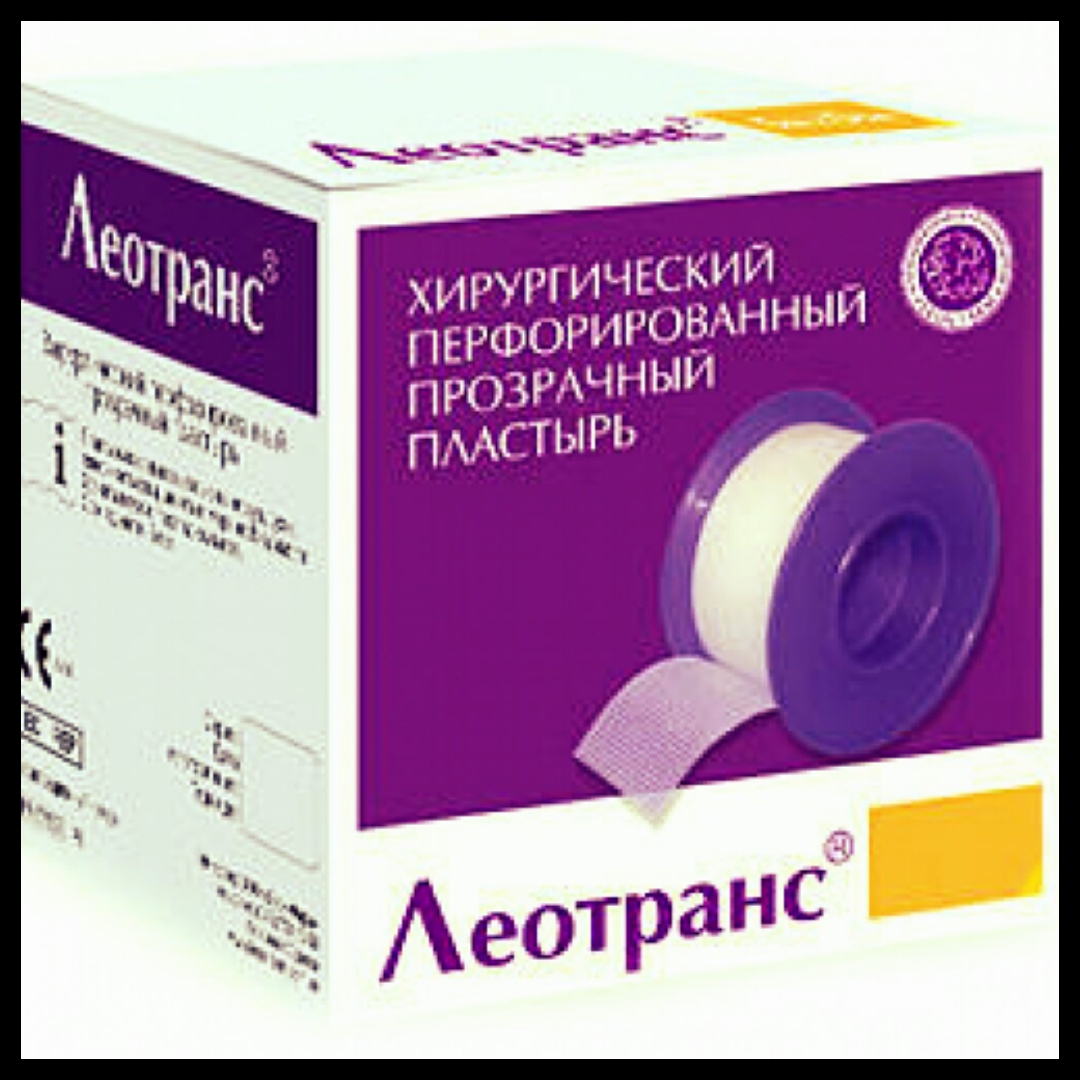
Perforated surgical, polymer-based can be found in almost any pharmacy at a price of 80 to 100 rubles. per coil 5 m. Strip width - 2.5 cm.
Advantages:
- The perforated tape makes it easy to tear off a piece of the required length;
- Hypoallergenic glue;
- Air permeable;
- Waterproof.
Disadvantages:
- Designed for dressing and fixing catheters and tubes to the skin. It cannot be argued that the product has the same functionality as cosmetic tapes.
Leopor

Perforated paper, for attaching butterfly needles, catheters and fixing bandages is used by many women for taping. Available in widths of 1.25 and 2.5 cm.
Advantages:
- Hypoallergenic adhesive and breathable texture exclude allergies and greenhouse effect;
- Easily removable;
- The average price in a pharmacy is from 30 rubles.
- It is used for children and sensitive, thin skin.
Disadvantages:
- It is not known for certain whether its application will give the desired effect.
Omnifilm
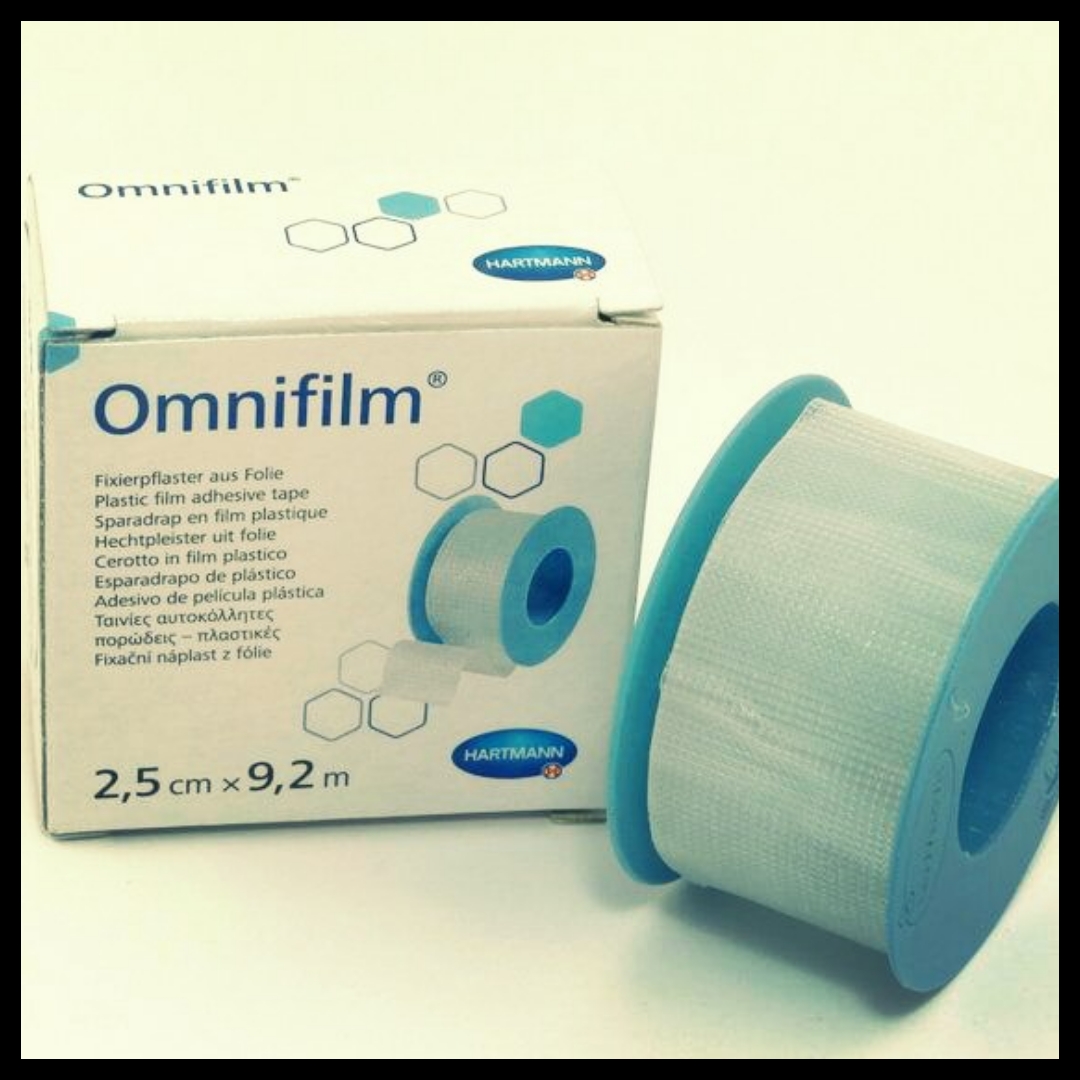
Polymer, perforated, with a hypoallergenic adhesive layer. Width 1.25 and 2.5 cm, in a reel 5 m.
Advantages:
- The skin under the patch breathes;
- Easy to tear off the tape of the desired length;
- Suitable for sensitive skin;
- Average price - from 90 to 130 rubles. per coil.
Disadvantages:
- Not intended for taping, the effect can only be established after regular use.
As an experiment, you can try to use these budget plasters during procedures. But it will be useful not only to follow the advice and recommendations of cosmetologists and supporters of aesthetic taping, but also to analyze all the information received. The effectiveness of this procedure for the beauty and health of the skin has not been proven, just as its harm has not been unequivocally proven. Therefore, in this case, it is better to use the “golden mean” rule: to experiment, keeping in mind the limitations, not to abuse savings to the detriment of skin health, and not to believe all the promises of the teip guru. Your beauty is in your hands.


